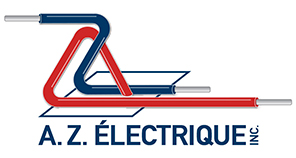How can a new thermostat save you money?
Like most technologies, thermostats have undergone a revolution in the last decade. Manual thermostats have been replaced by smart and programmable systems that allow a number of economic applications. Chances are, if your home’s thermostat is ten years old or older, it may be time for a replacement.
Not only will updating your existing thermostat offer new features – such as remote access via a computer or smartphone – but it can also help you save on your heating and cooling bill every month. The reason is simple: new thermostats allow owners to customize settings more easily.
Here’s how a new thermostat can save on energy costs
A new thermostat can save you money in two ways. For one, your existing system may be obsolete, resulting in inefficient heating or cooling throughout the home. Secondly, the system may be poorly located in your home, resulting in incorrect readings. In both cases, a new system can be the way to save energy. Here’s an overview of some specific ways a newly installed thermostat can reduce heating and cooling costs:
Badly placed thermostats
To effectively balance the temperature in your home, your thermostat must be placed in a central location. Thermostats installed in unsuitable locations – for example, close to a draughty garage door or in a room where solar heat gain is high – can result in misleading temperature readings, resulting in heating and inefficient cooling.
For example, a thermostat placed in the kitchen will indicate that the floor temperature is much higher when cooking. As a result, your HVAC system will shut down and other areas of the home will remain much cooler than the kitchen. To compensate, you increase the heating, which leads to additional heating costs at the end of the month.
Replacing a poorly placed thermostat can help homeowners balance heating and cooling throughout the home, which can eliminate incorrect temperature readings.
Programmable or Manual Systems
Manual systems are difficult to manage. In fact, it is estimated that homeowners rarely adjust manual thermostats, resulting in inadequate home adjustments. For example, during the workday when the house is empty, setting the temperature 5 to 7 degrees from normal can result in a noticeable change in your energy bill.
Installing a new programmable system can help you achieve this level of customization. For example, with a programmable thermostat, an owner can add a predetermined setting for the days of the week and for the hours of sleep. There is no need for manual adjustments, which can help you reduce costs.
Remote connectivity with smart thermostats
Finally, smart thermostats are the latest gadgets on the market and offer a higher degree of connectivity. Many intelligent systems allow remote connectivity. You can control and adjust the thermostat of the office or vacation.
In addition, these smart systems typically provide homeowners with data on their energy consumption. This data can help the homeowner identify specific ways to reduce costs and reduce their energy footprint.
If your thermostat is over 10 years old, it’s probably time for an upgrade. Not only will a new thermostat have a number of new features; There is also a good chance that it will save you money by helping you optimize your settings for specific conditions.

